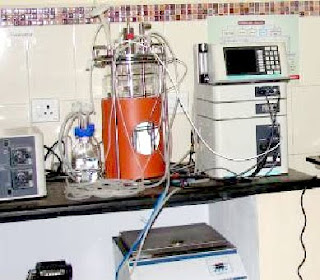
Fermentation was discovered by ancient people by prolonged soaking (steeping) of grains before cooking or storing juices of fruits. Alcohol was the first product of biotechnology. Now a day a modern technology developed for the production of alcohol on industrial scale is the fermentation.
Yeast and its types
The organism presently used in alcoholic fermentation is the yeast. It is a microscopic fungus Saccharomyces cerevisae. Louis Pasture in the middle of nineteenth century first reported the role of yeast in fermentation process. Presently, yeast products for human and animal consumption are products in large scale in many countries.
There are basically two types of yeast:-
1. Baker’s yeast – These include the selected strains of Saccharomyces cerevisae and Torulopsis grown on molasses. These are used to:
I. Flavor the food
II. Supplement nutrient ingredient as it is rich in proteins, vitamins, etc and
III. Ferment and rise dough in bread making (leaving agent). Leavening is caused by three enzymes secreted by yeast. These three enzymes are amylase, maltase and zymase. Amylase hydrolyses starch into maltose, maltase degrades maltose into glucose and zymase causes fermentation of glucose in anaerobic and produces mainly ethyl alcohol and CO2. Both CO2 and ethyl alcohol evaporate and make the bread porous and soft.
2. Alcohol (Brewer) yeast – These yeast are grown on carbohydrate, sucrose for the production of several types of alcoholic beverages. Majorities of alcoholic beverages are manufactured by metabolic activity of Saccharomyces cerevisae and other yeast.
How and why do microorganisms make alcohol?
Like other organisms, yeast has property to maintain the stock of ATP, which possible due to the consumption of sugars like glucose and fructose. Sucrose is the main component of sugarcane juice which consists of one glucose molecule attached to one molecule of fructose.
If the yeast is grown in oxygenated medium, the sugar will be broken down step by step, into smaller and smaller molecules and at the end, CO2 and energy are liberated. If yeast is grown in anaerobic medium, a series of chemical breakdown processes can be completed and sugar is broken down into ethanol or fuel alcohol.
Glucose is splitted up into two molecules of pyruvic acids via glycolysis. During fermentation pyruvic acids are degraed enzymatically into alcohol and CO2.
Yeast, which carries out alcoholic fermentation, contain two important enzymes –
(1) Pyruvate decarboxylase (2)Alcohol dehydrogenase. The pyruvate decarboxylase catalyzer decarboxylation of pyruvic acid to acetaldehyde which is further reduced to ethanol by NADH in presence of alcohol dehydrogenase.
Process of alcohol manufacture in industries
The raw material used for preparation of ethyl alcohol is molasses. It is thick, dark syrup drained from raw sugar during the refining process. It is also called the products of sugar (in sugar industry). Molasses mash (mixture of raw sugar and hot water) is adjusted to the desired sugar concentration and temperature by addition of water and to the desired pH by addition of a measured quantity of acid or base. Molasses is kept in a bioreactor (fermentation tank). Yeast (Saccharomyces), so called starter, is added and mixed uniformly with molasses mash in the same bioreactor. The mash and starter become well mixed as they spatter and fall to the bottom of the tank. Fermentation soon becomes vigorous with evolution of large quantities of CO2. Fermentation is completed within fifty hours or less. Then the fermented molasses is distilled and separated the alcohol and other volatile constituents from mash. The purification of alcohol is made by means of rectifying columns and then stored in a container.

0 comments:
Post a Comment